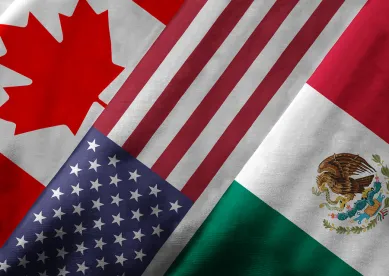The 25% steel and 10% aluminum tariffs announced today, and effective 15 days from now, raise a new cloud over the NAFTA negotiations. Although they temporarily exempt Canada and Mexico, the Administration has made it clear that the tariffs are still a prospect for Canada and Mexico if they do not make concessions on NAFTA. The Canadian and Mexican negotiators have rejected this linkage.
The Administration has signaled that the EU, Australia and perhaps other allies will be able to avoid the tariffs if they may make satisfactory alternative proposals to address the U.S. national security concerns. It is hard to see what those alternatives would be. European Union Trade Commissioner Cecilia Malmström said after the proclamations were signed that she looks forward to discussing an exemption for the EU with U.S. Trade Representative Robert Lighthizer on Saturday in Brussels. Earlier the EU had announced that it had 25% tariffs ready on U.S. motorcycles, jeans, cosmetics, bourbon, boats and agricultural products.
The markets have recovered since the President first announced the tariffs, reflecting a growing sense that they are another invitation to negotiate. The next move will be made 15 days from now.
Senator Flake said he will look to introduce legislation to block the tariffs. It is not clear that a veto-proof majority exists to make that possible. There is support for the tariffs in important swing states like Ohio and Pennsylvania during this election year.
In other NAFTA news, at the recently concluded seventh round of NAFTA negotiations in Mexico City, there was progress on automotive rules of origin, state-to-state dispute settlement and the periodic NAFTA review mechanism, but the U.S. continued to press several of its extreme positions such as auto domestic content. The U.S. negotiators reportedly engaged substantively on the rules of origin proposal that Canada put forward in Montreal, including focused additions to the tracing list, incentives for R&D investment, and incentives to ensure more regional steel and aluminum are used in vehicles. The negotiators are close to finishing chapters on sanitary and phytosanitary measures and technical barriers to trade. The U.S. has also backed off its earlier position opposing a separate energy chapter. The view is that the chances of U.S. withdrawal continue to decline, although the President continues to suggest that his threat of withdrawal is very real.
USTR Lighthizer said at the close that time is running “very short” to complete NAFTA negotiations, and he raised the specter of replacing NAFTA with two bilateral agreements if the tripartite talks do not succeed.



 />i
/>i

